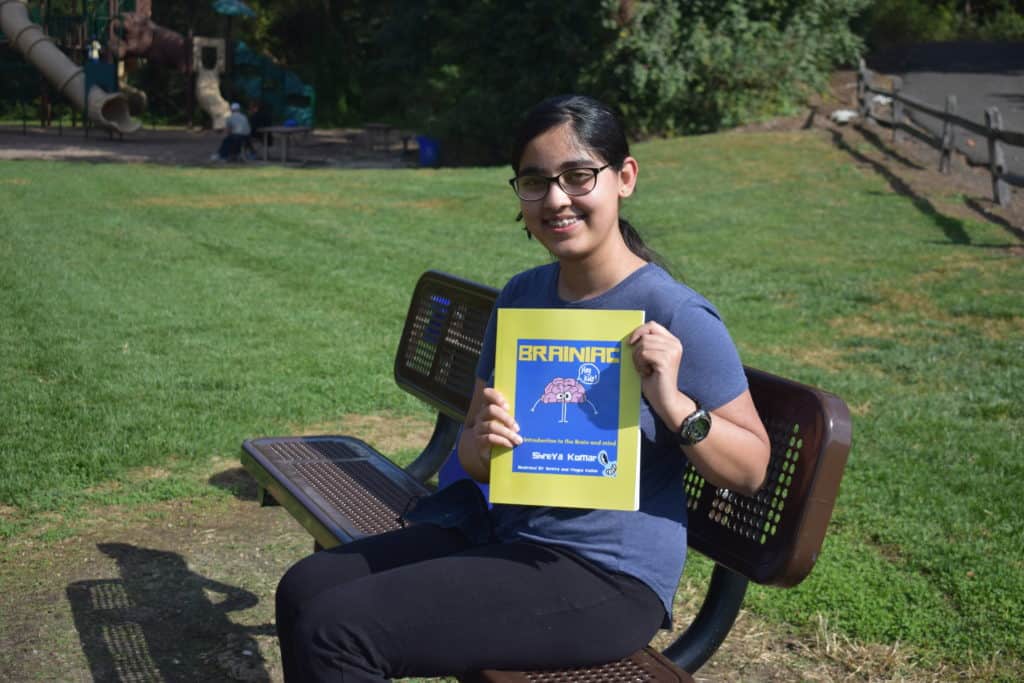

Shreya Komar has always been passionate about mental health.
Growing up, her interest in psychology and pursuing both an arts and science education pushed her and her family to move from India to America in August 2020, joining her father, who was already here.
Komar explained that in India, she could choose arts or science, but not both, and psychology majors are more rare.
One year after she arrived, Komar published “Brainiac: An Introduction to the Mind and Brain,” a nonfiction book for kids. It was a project that took three months and her younger sister Megha’s help with illustrations to complete. The book covers both the physical, like neurons and senses, as well as an introduction to mental health: what it is and some practices that kids can do, like meditation, breathing techniques and journaling.
“I thought, how great would it be if we knew this as a kid, and you were ready for challenges when they came to you?” Komar said.
Though she had written a poetry book before, “Brainiac’ is Komar’s first nonfiction work.
“It was very different (from writing the poetry book), because it wasn’t just something that was mine,” she recalled. “I had to say something that was true. I had to do a lot of research.
“You can’t just write whatever you want,” she added, “because you have to give people information that’s proven, information that’s right. I had to do research.”
Before her move to the U.S. and throughout the pandemic, Komar also started a blog called Purple Space, named after her favorite color.
“I started it while I was still in India, because I wanted to create a platform where people could just talk about stuff related to the mind, like how to keep happiness or keep good mental health, peer-to-peer advice,” she explained.
“ … In the South Asian community, it’s really taboo to talk about mental health, which is why I have personal initiatives to destigmatize mental health in my community.”
Where Komar used to write weekly by herself, the blog now serves as a place where people around the world can share their stories about mental health.
“There are so many other people and perspectives; mental health is something everyone experiences in a different way,” she noted. To her, mental health means “knowing yourself, and knowing how you function best.”
Komar acknowledged that both the good and the bad look different for everyone. For some, good mental health might look like doing meditation, cooking a meal or sleeping an extra hour. Bad mental health can be a bit easier to spot, as it can look like burnout or exhaustion.
“You know how some people say they’re so burnt out or done with everything? That’s how you know that there’s something wrong, because technically what you’re doing shouldn’t be so exhausting that you feel burnt out,” she explained.
“It’s less stigmatized here, on the surface level, but deep down, I feel like it’s still an issue,” Komar observed. “Though there are so many wellness people on social media, and people talk more about it, I don’t think it’s working, or people are actively trying to take care of their mental health.
“I go to high school and I still hear people joking about how they stayed up ‘til 3 a.m.,” she added. “It’s just the small things that make you feel like people are not taking care of their mental health.”
Komar hopes to pursue psychology in college and continue to use storytelling to spread awareness of mental health issues and experiences.
Her book can be found on Amazon, and the blog can be found at https://purplespaceblog.com/.


